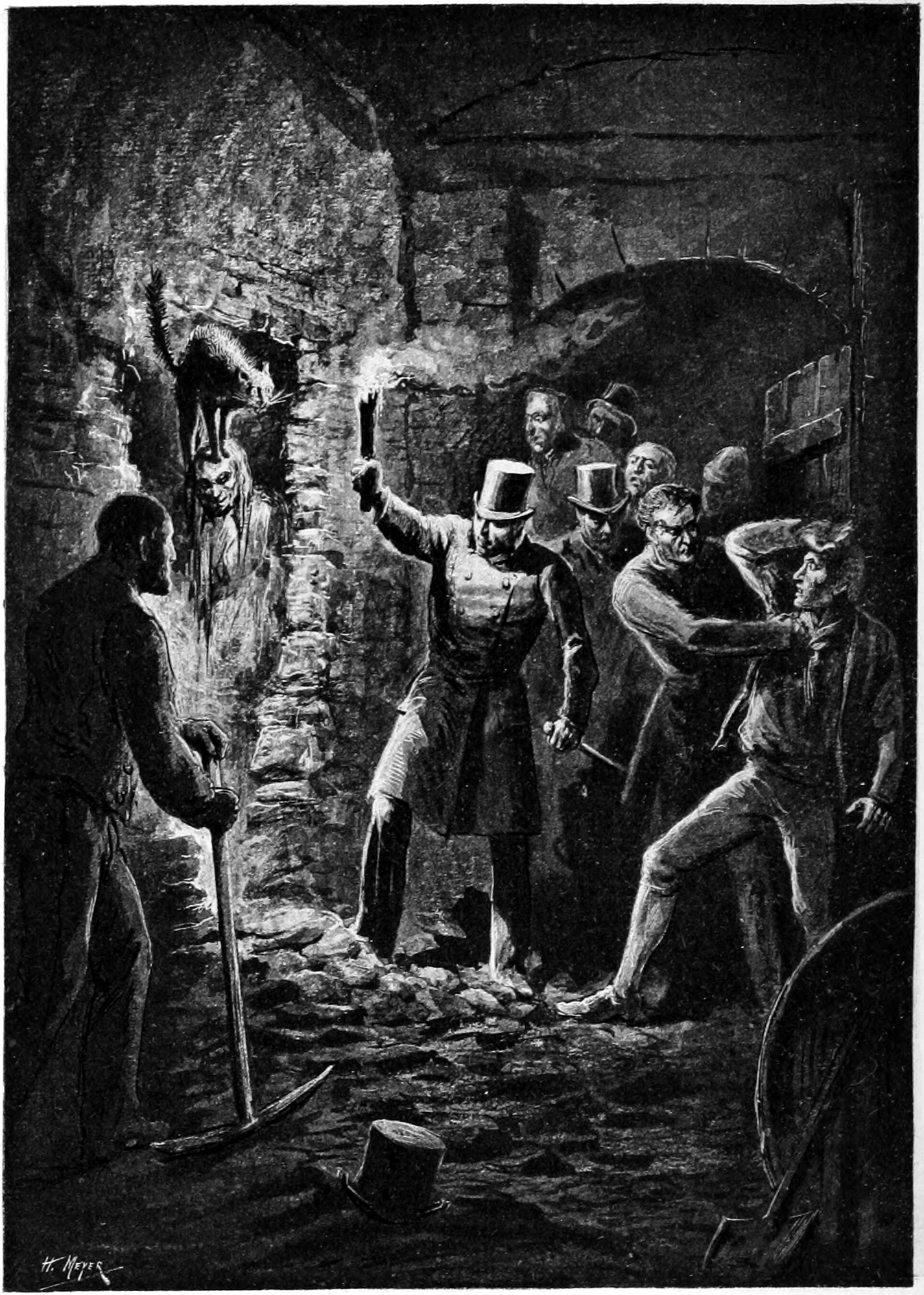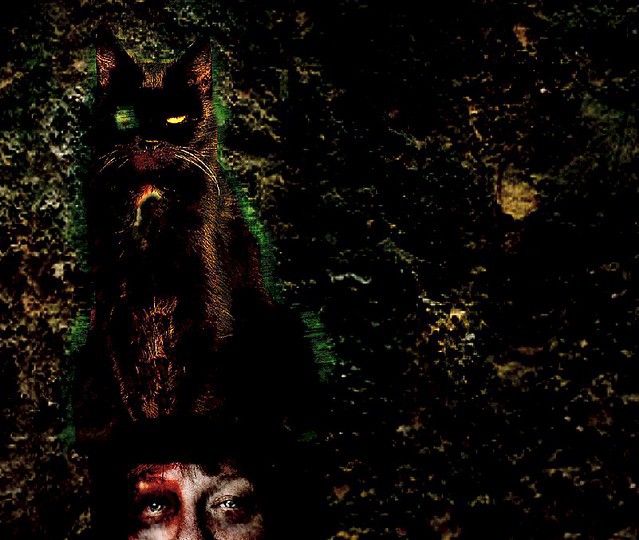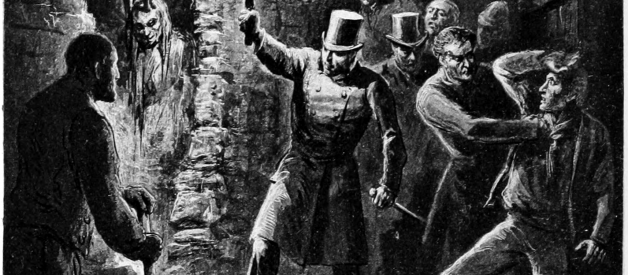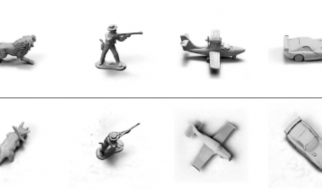
Brace yourself? There was no cat.
Of course, such a lofty claim begs for reason and proper explanation ? which I will provide ? but first, a quick rundown of the story.
The Black Cat is short piece of fiction in which the narrator lays out the events that lead to the death of his (SPOILER ALERT) wife. His confession appears to be an attempt to convince the reader that a series of black cats acted upon him in a supernatural manner, possessing him to act violent.
The narrator establishes himself as quite fond of animals. He enjoys, ?caressing them,? and referred to them as one of his, ?principal sources of pleasure.? Fortunately for the narrator his wife shares similar sentiment for animals, which allows him to live in a house that could be likened to a personal zoo.
Poe, through the narrator, litters the text with clues toward the narrator?s perverse relationship with a particular black cat. Note the word brute from the outset of the piece:
?There is something in the unselfish and self-sacrificing love of a brute, which goes directly to the heart of him who has had frequent occasion to test the paltry friendship and gossamer fidelity of mere Man.?

After the narrator rips the black cat?s eye out, and before he hangs the cat from the tree, he refers to him as, ?the offending brute.? Later on, when another black cat enters the narrator?s life he also refers to his new ?friend? as a brute.
The term brute is interesting, especially for a feline given their domesticated nature and smarts. Let?s examine both the American and British versions of the definition of brute from the Cambridge Dictionary .
British
? disapproving a rough and sometimes violent man:
? an animal, especially a large one:
American
? a person who is offensive and rude, and often violent:
? A brute is also a large, strong animal.?
I don?t think it?s much of a leap for one to say that a brute can be a reference to a man, and that in this case the cats referred to in the story are indeed men. The term is less of a stretch when you examine the text further.
Before we do so we should establish that this narrator is completely unreliable. Not only does he appear completely mad, he?s an alcoholic. Take this line (before he cuts the first cat?s eye out) as evidence of his alcoholism and for more insight into what?s going on in The Black Cat.
?One night, returning home, much intoxicated, from one of my haunts about town, I fancied that the cat avoided my presence.?
One of Poe?s rules for writing was to make sure every word in his piece is necessary and adds to the story. Not only is the narrator speaking freely about his unbecoming behaviour, we also see Poe?s penchant for playing with words here, in reference to the word ?haunt?.
In a story that refers to the supernatural using the term haunt here should strike the reader as important. While the noun version of haunt can refer to a place frequently visited, such as a bar, it can also refer to someone, commonly a ghost, that appears in a place repeatedly. Given the structure of the sentence, the narrator could either be the person doing the haunting, or the bar where he got intoxicated. Nevertheless, the writing is clever.

It should be mentioned that the narrator does reference a bar later in the story as, ?A den of infamy,? notably when he meets a second black cat ? and if we read it as if the cat were a man, this is where things get interesting.
?? but this cat had a large, although indefinite splotch of white, covering nearly the whole region of the breast. Upon my touching him, he immediately arose, purred loudly, rubbed against my hand, and appeared delighted with my notice.?
The narrator inquires to purchase him, the cat, from the landlord. If the idea of purchasing a man seems wrong keep in mind that slavery was still legal in the United States during Poe?s lifetime. To be fair, Poe lived in Boston when he began publishing his work, however, he spent a large part of his life in the state of Virginia, which didn?t abolish slavery until the end of the civil war. Couple this with the narrator hanging the first black cat from a tree and imagery of the horrors encountered by blacks in the United States during this time period begin to fill one?s mind. If The Black Cat wasn?t disturbing enough, reading it through this lens heightens the horror.
The narrator?s inner turmoil is more explainable with this theory. The narrator may very well be attracted to, even in love, with a black man. He would never be able to share such a thing in this time period. This very thing could create enough shame in the narrator to drive him mad given the state of society at this time.
Furthermore, the narrator?s affection, both physically and mentally, for his wife is never touched upon. However, it is in reference to the cat.
?I continued my caresses, and, when I prepared to go home, the animal evinced a disposition to accompany me. I permitted it to do so; occasionally stooping and patting it as I proceeded. When it reached the house it domesticated itself at once, and became immediately a great favorite with my wife.?
Translation: ?I found a new man at the bar. I caressed him, and he followed him home (and continued to touch him along the way). When I got home, my wife was happy. We had a servant again.?
? shortly followed by?
?For my own part, I soon found a dislike to it arising within me. This was just the reverse of what I had anticipated; but ? I know not how or why it was ? its evident fondness for myself rather disgusted and annoyed. By slow degrees, these feelings of disgust and annoyance rose into the bitterness of hatred. I avoided the creature; a certain sense of shame, and the remembrance of my former deed of cruelty, preventing me from physically abusing it.?

What?s the easiest way for this narrator to get rid of his shame? Kill the wife. Killing the cat didn?t work the first time, so the wife, who symbolically reminds him of his failure as a husband, is the next logical step. What?s the best way to explain oneself after this act, while concealing the true motive for the murder? Say the cat possessed you. His unreliability forces us to play detective, reading between the lines.
Ann V. Bliss touches on the narrator?s struggle with masculinity in her paper, ?Household Horror: Domestic Masculinity in Poe?s The Black Cat.? While she doesn?t go as far to say that the cat was a man, she does look at the piece from a gendered lens. She concludes that the killing of the narrator?s wife was his most excessively masculine act.
Such a reading of The Black Cat by myself or Bliss might be looked upon as controversial, however, Poe?s work touches on murder ? the controversial is unavoidable. Poe?s narrators often don?t tell the whole story, such as in The Tell-Tale Heart and The Cask of Amontillado, forcing the reader to hypothesize based on what?s between the lines of the story. It?s fair to say that the narrators in Poe?s stories do not feel comfortable to share their truths, either in an attempt to proclaim some sort of innocence, or that the truth was less explainable or accepted than the real reasons behind the hideous acts.
If you?re writing a paper, or teaching Poe to your class, check out my Edgar Allan Poe Cheat Sheet for Poe related resources.
Note: This idea was inspired by a class discussion in Professor Dana Medoro?s American Literature course at the University of Manitoba.


